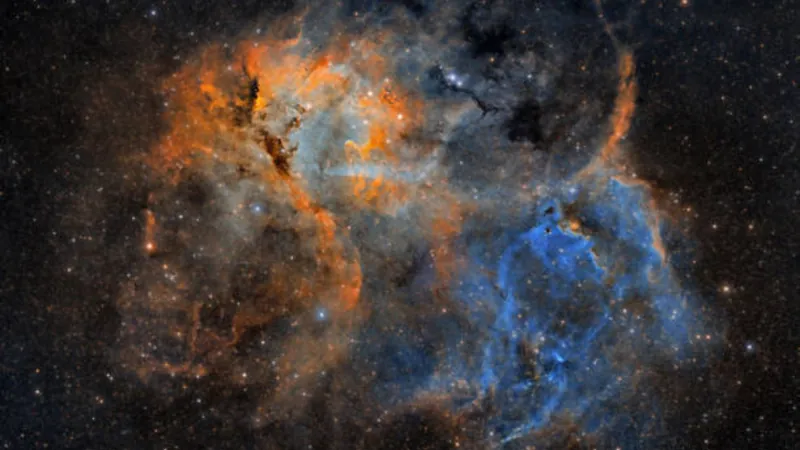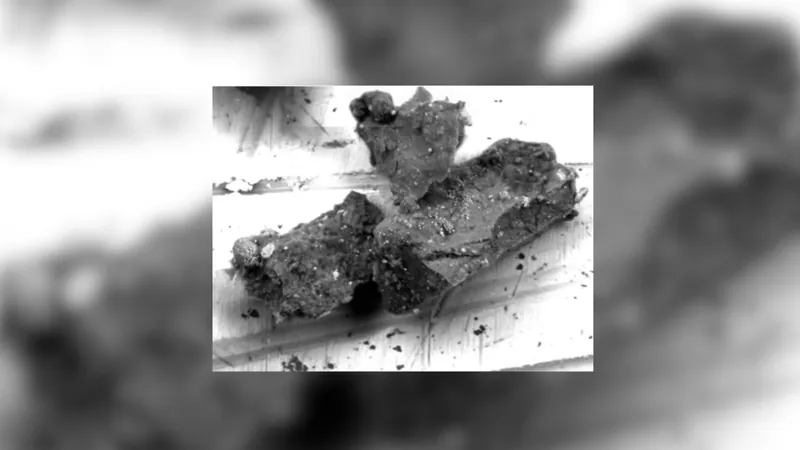
10 Mind-Blowing Space Objects You Didn't Know About
2025-05-18
Author: Arjun
Exploring the Wonders of Space
The vast universe is bursting with awe-inspiring curiosities, from tiny meteoroids to colossal asteroids and even interstellar visitors. These objects not only captivate our imaginations but also provide critical insights into the formation of our Solar System and its future. Here, we spotlight ten remarkable, often misunderstood cosmic treasures that drift through our solar neighborhood.
Meteoroids: The Cosmic Debris
Meteoroids are fragments of rock and metal that can range from fine sand grains to massive boulders over a meter wide. They originate primarily from broken asteroids and occasionally from comets shedding their dusty remnants. Despite their small size, trillions of meteoroids are zipping through the inner Solar System at jaw-dropping speeds over 40 km/s! When one collides with Earth's atmosphere, it creates a spectacular display known as a meteor, or “shooting star.” These luminous streaks typically occur 80 to 120 km above the surface, burning out in mere seconds. The vibrancy of their colors, from white to green, results from their velocity and mineral composition.
From Meteoroids to Meteorites
If a meteoroid manages to survive its fiery entry and land on Earth, it transforms into a meteorite, a prized specimen for scientists. Some meteorites date back to the very birth of our Solar System, holding ancient materials from over 4.6 billion years ago. These fascinating rocks come in three types—stony, iron, and stony-iron—and can weigh anywhere from a gram to several tons. Imagine holding a piece of outer space in your hand! Iconic meteorites include the massive 60-ton Hoba meteorite from Namibia and the Allende meteorite, filled with presolar grains.
Asteroids: The Rocky Giants
Asteroids are larger rocky bodies, starting from over a meter across and stretching up to Ceres, which boasts a staggering 940 km diameter. Most dance around the Sun in the main asteroid belt, located between Mars and Jupiter—a remnant zone of primordial planetesimals that never formed into larger planets due to Jupiter's gravitational influence. Their forms can vary widely, from irregular rubble piles to spherical dwarfs. By studying asteroid compositions, scientists can uncover clues about the ingredients that shaped our planetary system.
Guardians of Earth: Near-Earth Objects
Some asteroids and comets venture perilously close to our planet, making them near-Earth objects (NEOs). Due to their potential to cause significant damage upon impact, these celestial body trajectories are closely monitored. NASA's Planetary Defense Coordination Office tracks thousands of NEOs using advanced infrared telescopes and radar. While most are benign, tracking their movements prepares us for any future threat that might arise.
Comets: Icy Time Capsules
Comets are fascinating icy bodies that encapsulate frozen water, carbon dioxide, and other materials. As they approach the Sun, their ices vaporize, producing magnificent tails that can stretch for millions of kilometers. The glowing coma around the nucleus shines brilliantly as sunlight scatters off the gas and dust. Notable comets like Halley's Comet, which makes its return every 76 years, and the spectacular Comet NEOWISE, seen in 2020, both mesmerize sky-watchers.
The Mysterious Kuiper Belt
Beyond Neptune lies the enigmatic Kuiper Belt—a circular region filled with icy remnants from the Solar System's youth. Home to celebrity objects like Pluto, Eris, and Haumea, this area also conceals hundreds of thousands of smaller bodies. Objects in the Kuiper Belt can provide tantalizing clues about planetary formation and migration. NASA’s New Horizons mission, which flew by Arrokoth in 2019, revealed a unique KBO that looked like a cosmic snowman, supporting theories of gentle mergers that formed these distant objects.
Dwarf Planets: The Little Giants
In 2006, the International Astronomical Union redefined the term “planet,” relegating bodies like Pluto to the status of “dwarf planets.” These celestial bodies—Ceres, Pluto, Eris, Haumea, and Makemake—are massive enough for their gravity to shape them into spheres but lack the ability to dominate their orbits. Despite their new classification, dwarf planets showcase intriguing geological features; Pluto, for instance, has nitrogen glaciers and may have subsurface oceans, highlighting that size isn’t everything in cosmic fascination.
The Hypothetical Oort Cloud
Way beyond the Kuiper Belt, possibly halfway to the nearest star, lies the theoretical Oort Cloud—an enormous spherical shell of icy nuclei. Occasionally, gravitational nudges from passing stars might dislodge one, sending a long-period comet hurtling toward the Sun. Though no spacecraft have ventured to this distant frontier, observations of extreme comets like Hale-Bopp provide tantalizing hints about this vast collection of icy bodies, marking the fuzzy boundary between the Sun's gravitational influence and the vast reaches of interstellar space.
Interstellar Visitors: A Glimpse Beyond
In 2017, astronomers made waves with the discovery of 'Oumuamua, the first known object from outside our Solar System, passing near the Sun on a hyperbolic trajectory. This was soon followed by Comet Borisov, confirming these rare visitors aren’t just flukes. These interstellar objects are valuable time capsules, providing samples of materials forged around alien stars, giving us a fleeting insight into the chemistry that exists beyond our own cosmic neighborhood. Future missions aim for rapid-response flybys to study their compositions before they vanish back into the galaxy.


 Brasil (PT)
Brasil (PT)
 Canada (EN)
Canada (EN)
 Chile (ES)
Chile (ES)
 Česko (CS)
Česko (CS)
 대한민국 (KO)
대한민국 (KO)
 España (ES)
España (ES)
 France (FR)
France (FR)
 Hong Kong (EN)
Hong Kong (EN)
 Italia (IT)
Italia (IT)
 日本 (JA)
日本 (JA)
 Magyarország (HU)
Magyarország (HU)
 Norge (NO)
Norge (NO)
 Polska (PL)
Polska (PL)
 Schweiz (DE)
Schweiz (DE)
 Singapore (EN)
Singapore (EN)
 Sverige (SV)
Sverige (SV)
 Suomi (FI)
Suomi (FI)
 Türkiye (TR)
Türkiye (TR)
 الإمارات العربية المتحدة (AR)
الإمارات العربية المتحدة (AR)